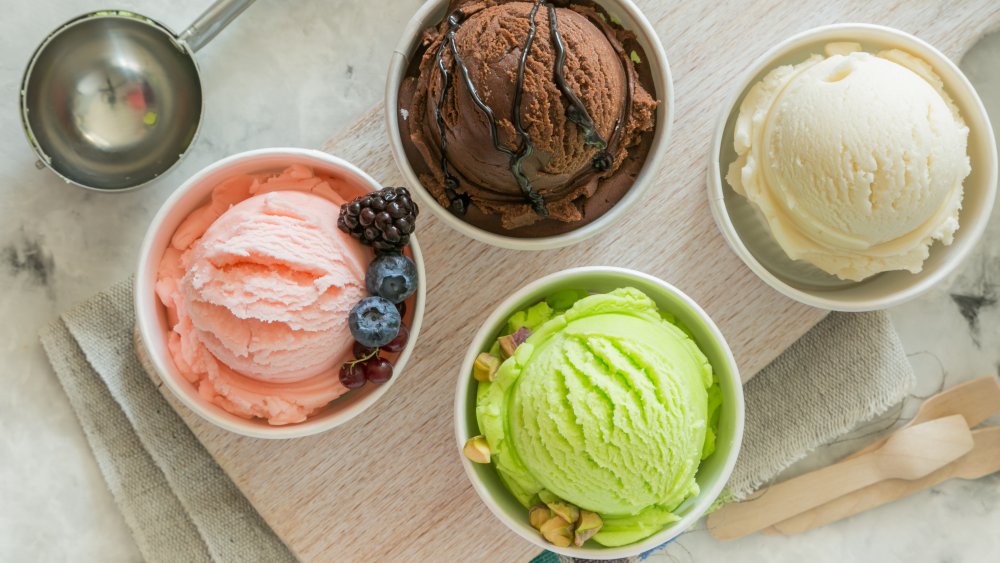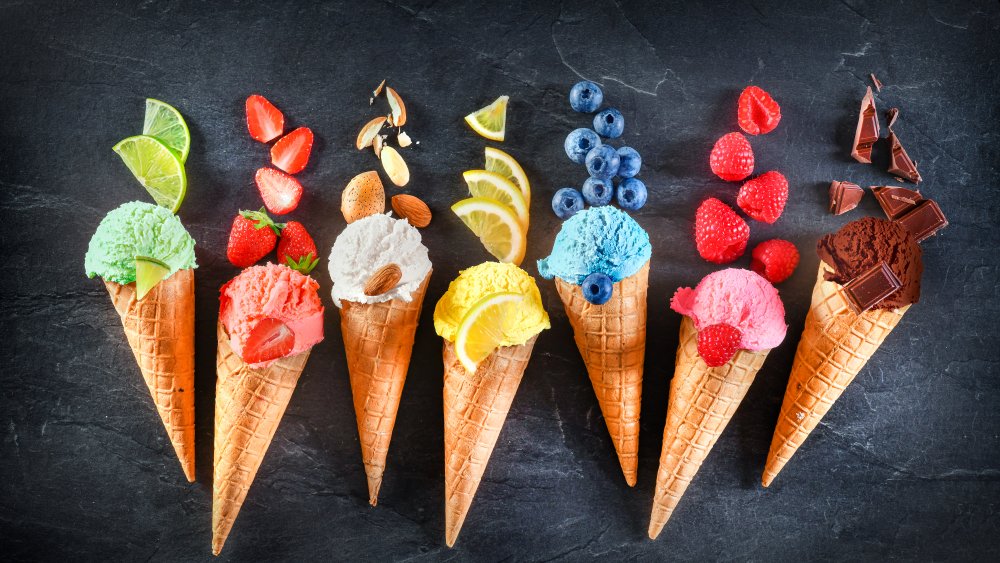The Real Reason Ice Cream Is So Addictive
Smooth and creamy, perfectly sweet, melts in your mouth, evokes memories of childhood, and delivers the ultimate pleasurable experience. Clearly, we're talking about ice cream. Licked from a cone, enjoyed from a bowl, or whirled into a milkshake, there's no question we can't get enough of this frozen treat. Even those who live a dairy-free lifestyle flock to find alternatives to replace the missing hole ice cream leaves. And, according to the International Dairy Foods Association, the average American consumes more than 23 pounds of ice cream per year.
But is it the sugar and cream we crave, or something more scientific? We definitely lust for sweetness first, but this is followed by the buttery mouthfeel (via CNN). Ice cream is just sweet enough, without being cloying, so it's easy to enjoy one spoonful after another. The amount of milk fat (called butterfat) matters, too. To be called "ice cream," a product must contain at least 10 percent butterfat (from milk, cream, or butter); and premium brands tend to hover around 18 percent (via FDA). It's the butterfat that keeps flavors lingering, which leads to a longer, more enjoyable experience (via Ice Cream Science).
What's in ice cream that makes it so addictive?
There's no question that the sugar and fat commingling on your palate make for a rewarding experience. But there's chemistry behind our passion for ice cream, too.
Dairy contains the milk protein casein. Protein fragments of casein, called casomorphins, are derived from the digestion of milk and can produce opiate-like effects (via ResearchGate). In fact, casomorphins mimic morphine-like compounds and attach to the same brain receptors as heroin, morphine, and other narcotics (via Forbes). You won't feel drugged per se, but you'll enjoy the ice cream experience all the more.
In a 2015 study of foods with addictive qualities, of the 35 foods examined, ice cream ranked second overall (via U.S. National Library of Medicine). As the sugar and fat melt on your tongue, dopamine and other feel-good chemicals get fired up explains TODAY. This is because high-fat, high-calorie foods, like ice cream, trigger the pleasure centers in the brain, much like cocaine and heroin (via Medical Daily). We don't just derive pleasure from the sweet butterfat either — specific memories of how rewarding eating ice cream was as a kid are often thrown into the mix, too (via BrainFacts.org).
Additionally, just as drug addicts develop a tolerance for specific drugs, people can experience a tolerance for certain foods. Research suggests that the brain's pleasurable response to ice cream decreases if it's eaten frequently (via Delish). The more we eat, the more we want so we can spark those feel-good moments.

